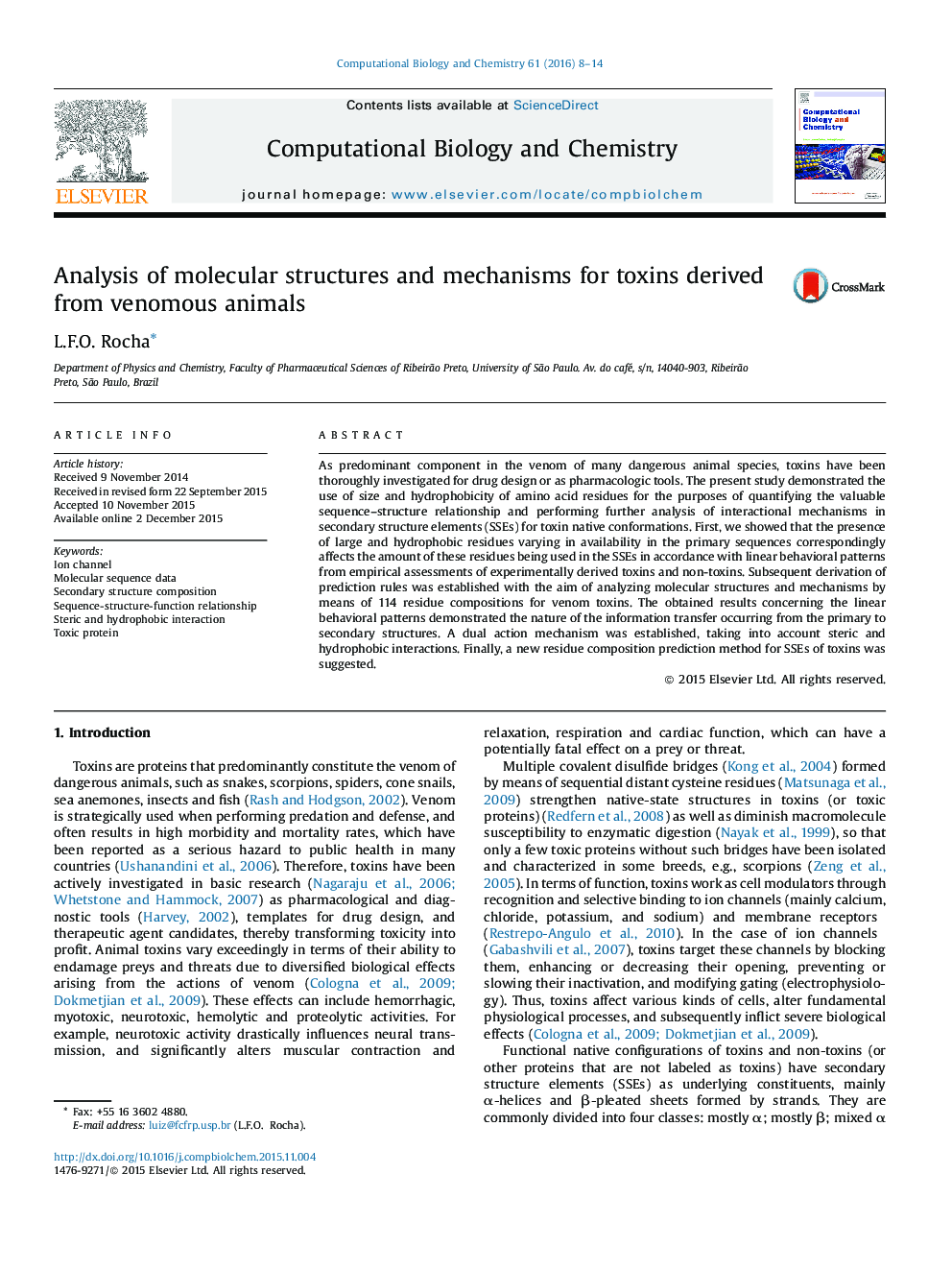| کد مقاله | کد نشریه | سال انتشار | مقاله انگلیسی | نسخه تمام متن |
|---|---|---|---|---|
| 14926 | 1362 | 2016 | 7 صفحه PDF | دانلود رایگان |
• We showed a linear behavior between availability and use of residues in non-toxins.
• Five prediction rules were employed for 114 residue compositions in venom toxins.
• A dual molecular mechanism by stereochemical interactions was revealed for toxins.
• A new residue composition prediction method to analyze toxins was suggested.
As predominant component in the venom of many dangerous animal species, toxins have been thoroughly investigated for drug design or as pharmacologic tools. The present study demonstrated the use of size and hydrophobicity of amino acid residues for the purposes of quantifying the valuable sequence–structure relationship and performing further analysis of interactional mechanisms in secondary structure elements (SSEs) for toxin native conformations. First, we showed that the presence of large and hydrophobic residues varying in availability in the primary sequences correspondingly affects the amount of these residues being used in the SSEs in accordance with linear behavioral patterns from empirical assessments of experimentally derived toxins and non-toxins. Subsequent derivation of prediction rules was established with the aim of analyzing molecular structures and mechanisms by means of 114 residue compositions for venom toxins. The obtained results concerning the linear behavioral patterns demonstrated the nature of the information transfer occurring from the primary to secondary structures. A dual action mechanism was established, taking into account steric and hydrophobic interactions. Finally, a new residue composition prediction method for SSEs of toxins was suggested.
Figure optionsDownload as PowerPoint slide
Journal: Computational Biology and Chemistry - Volume 61, April 2016, Pages 8–14
